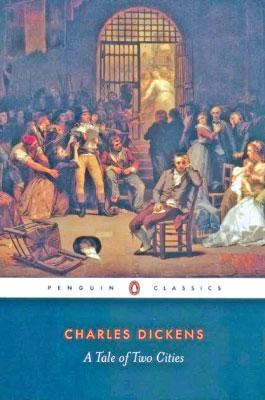
A Tale of Two Cities by Charles Dickens is set in the context of the French Revolution, and the events in the novel take place in London and Paris during the late eighteenth century.
The opening lines of the novel sets the context: “It was the best of times, it was the worst of times, it was the age of wisdom, it was the age of foolishness, it was the epoch of belief, it was the epoch of incredulity, it was the season of light, it was the season of darkness, it was the spring of hope, it was the winter of despair, we had everything before us, we had nothing before us, we were all going direct to Heaven, we were all going direct the other way—in short, the period was so far like the present period, that some of its noisiest authorities insisted on its being received, for good or for evil, in the superlative degree of comparison only.”
The novel begins with the re-union between a young French woman named Lucy Manette and her father Dr. Manette, who is released from the Bastille after eighteen years of imprisonment.
Charles Darnay, a French aristocrat living in London is accused of treason against the British Crown, but is acquitted after Sydney Carton, an English barrister who bears a resemblance to Darnay comes to his rescue. Darnay is a nephew of the despised Marquis St. Evrémonde of France who is cruel and abusive to the under classes. Darnay does not agree with his uncle’s views on the under privileged, and he disowns his uncle and cuts off ties with him. Later on in the novel, Darnay is arrested by the French Revolutionaries in Paris.
Dickens examines the theme of a love triangle through the relationship between Lucy, Darnay and Carton as both men are in love with her. Dickens also highlights the oppression of the under classes by the aristocracy as one of the causes of the French Revolution.
